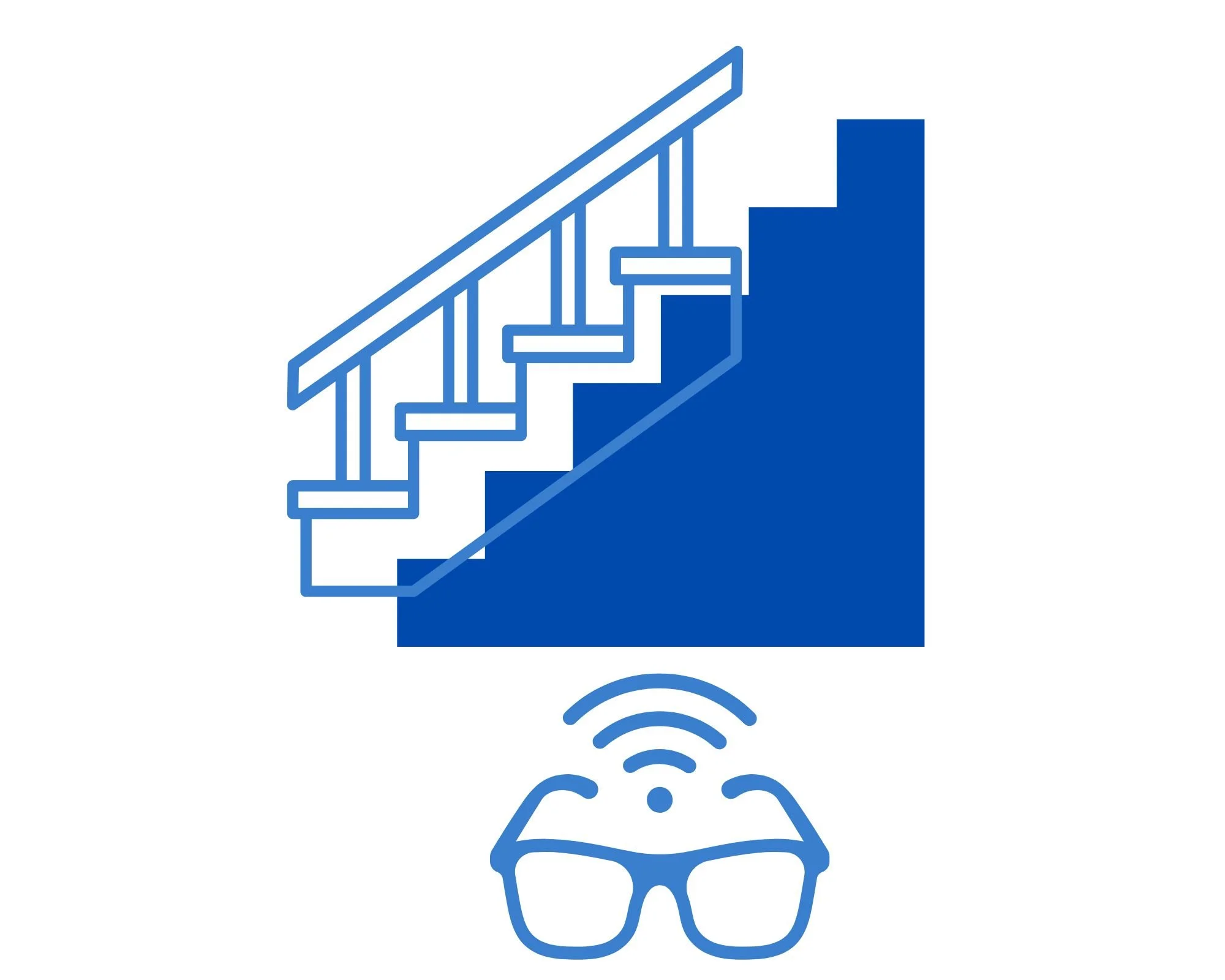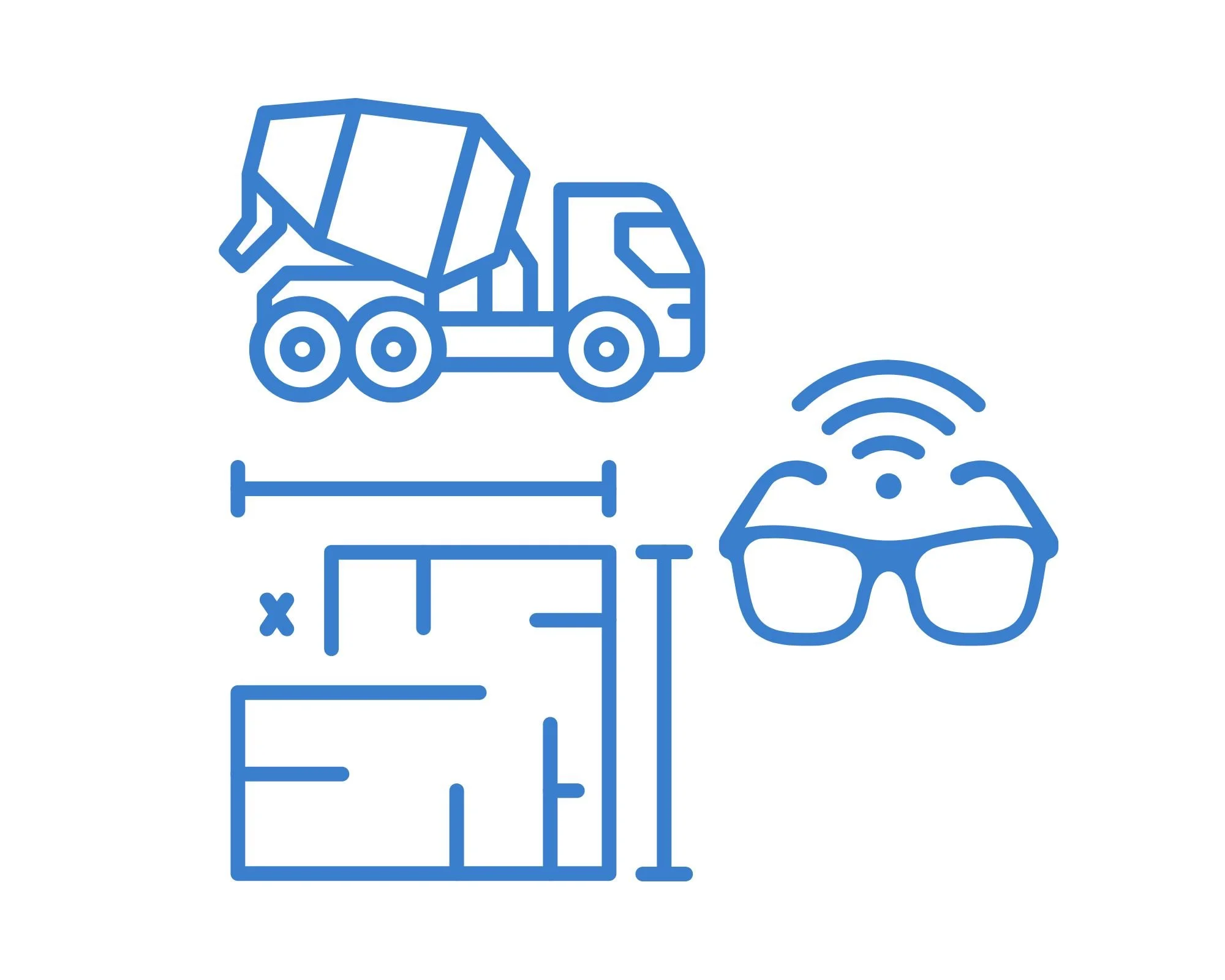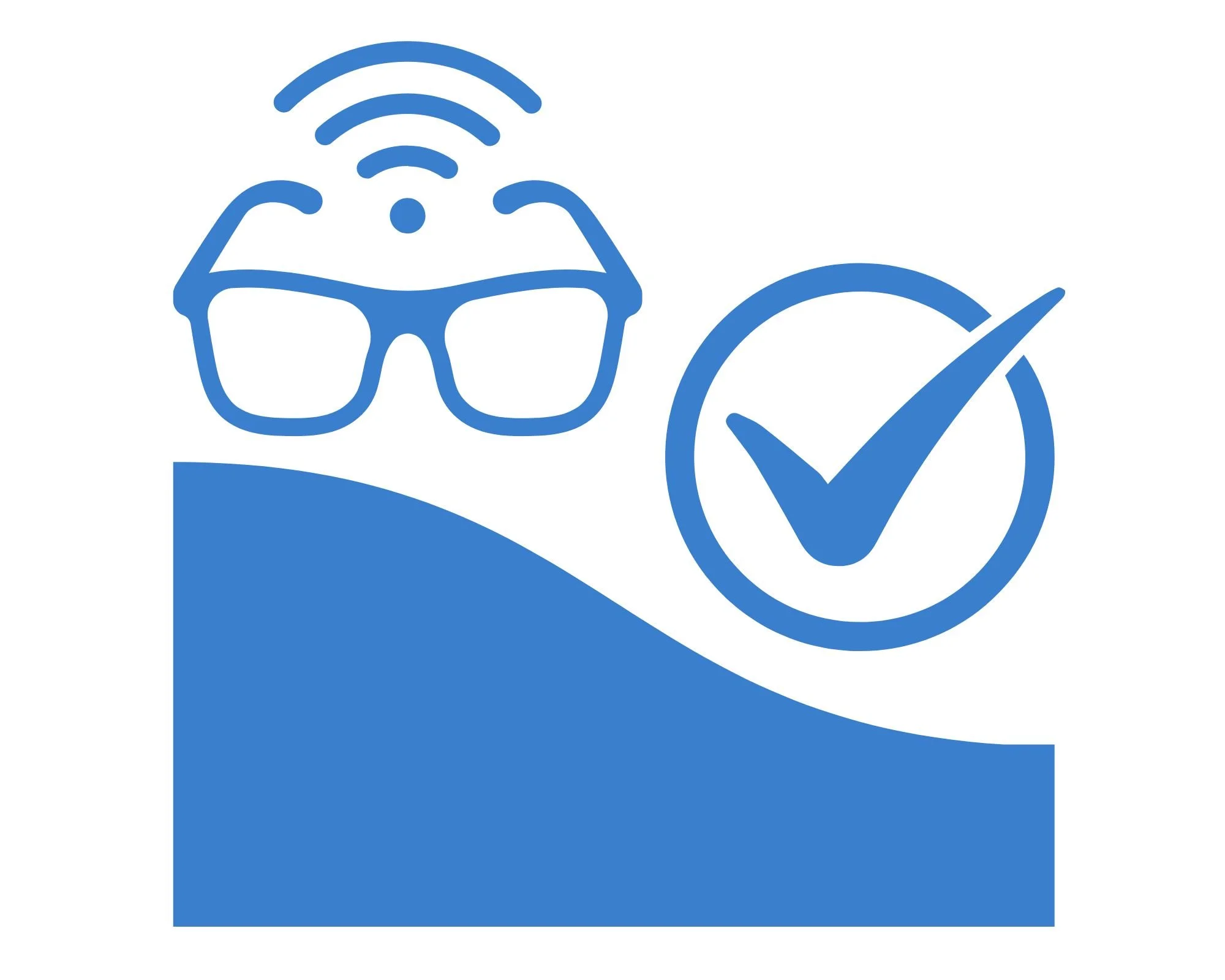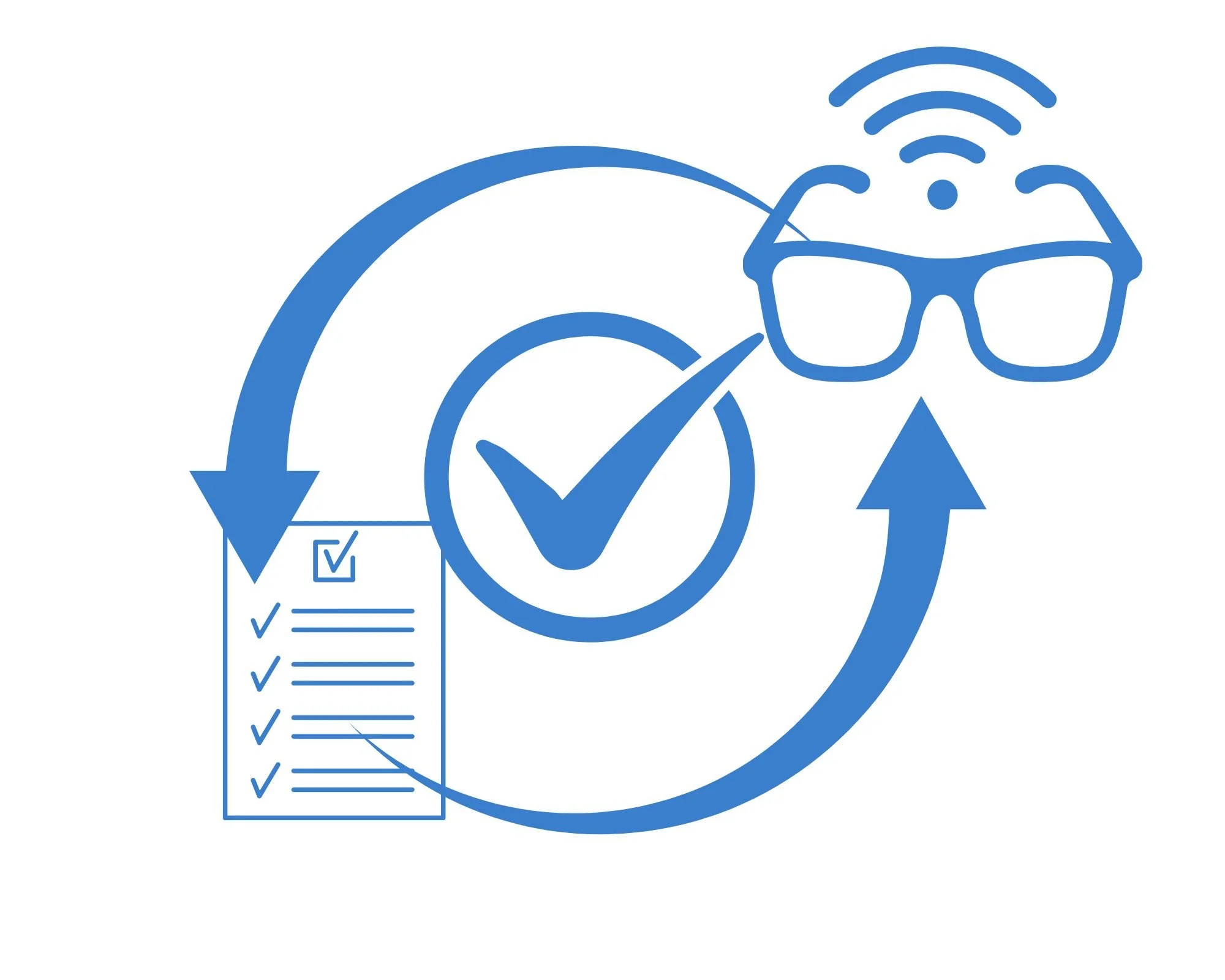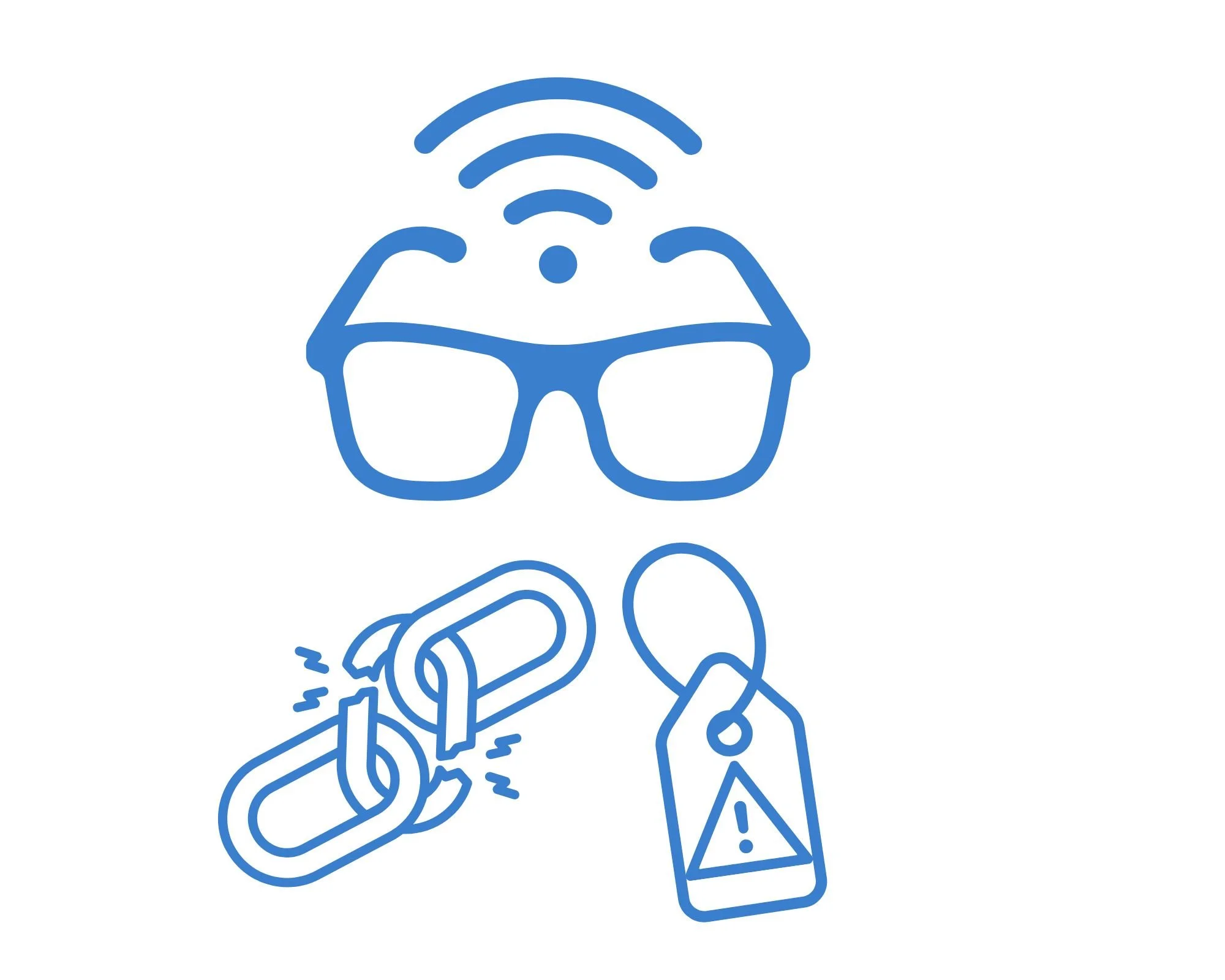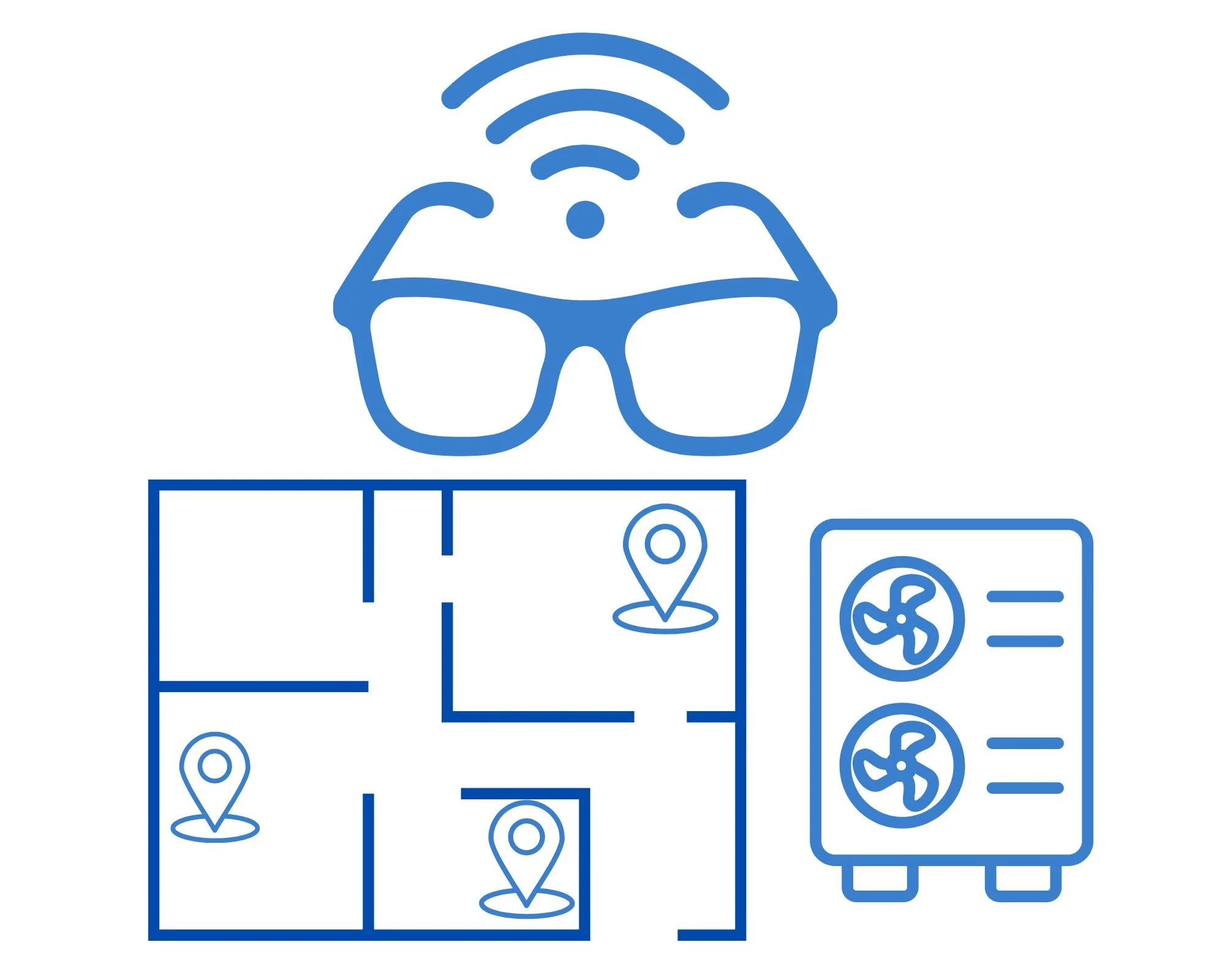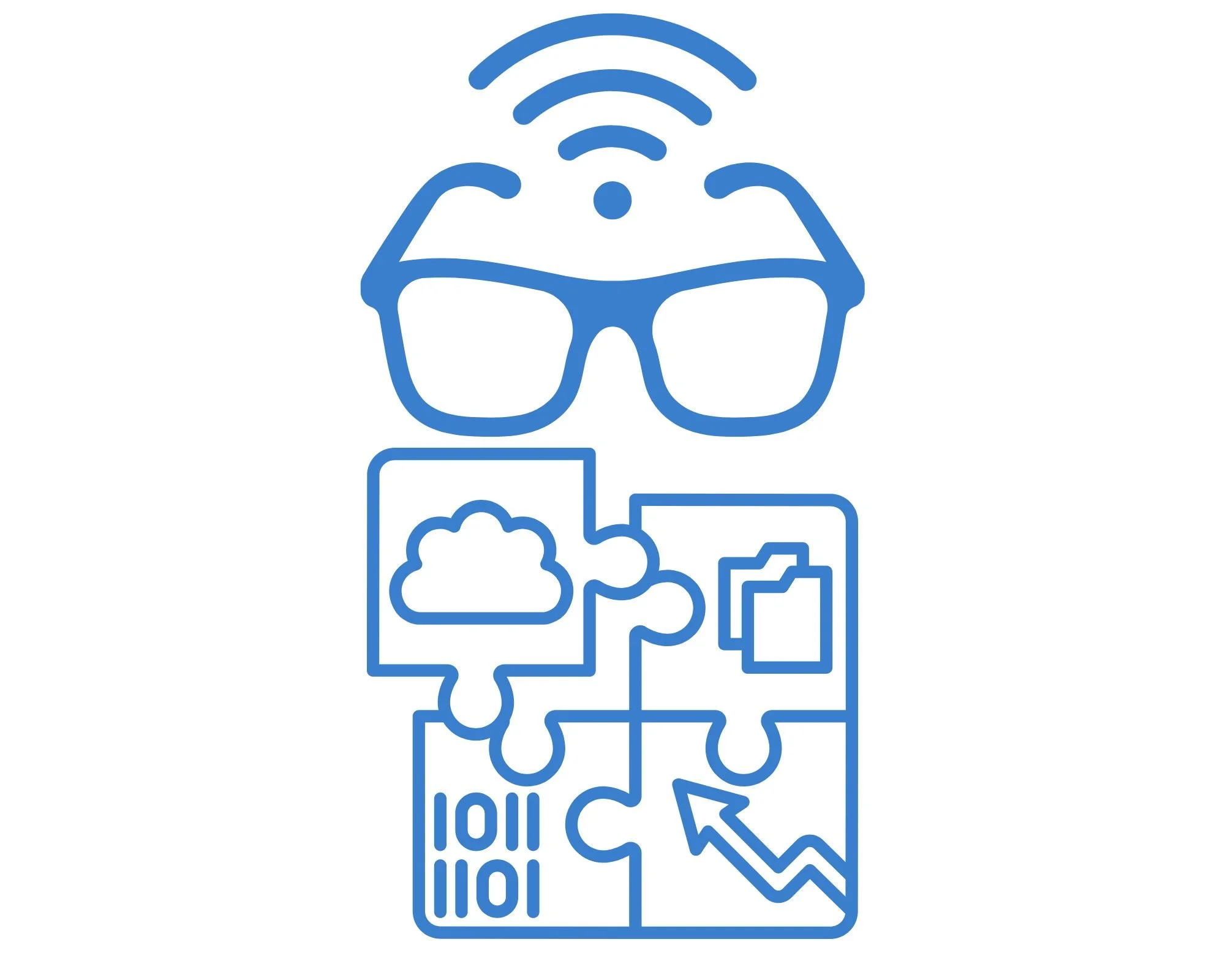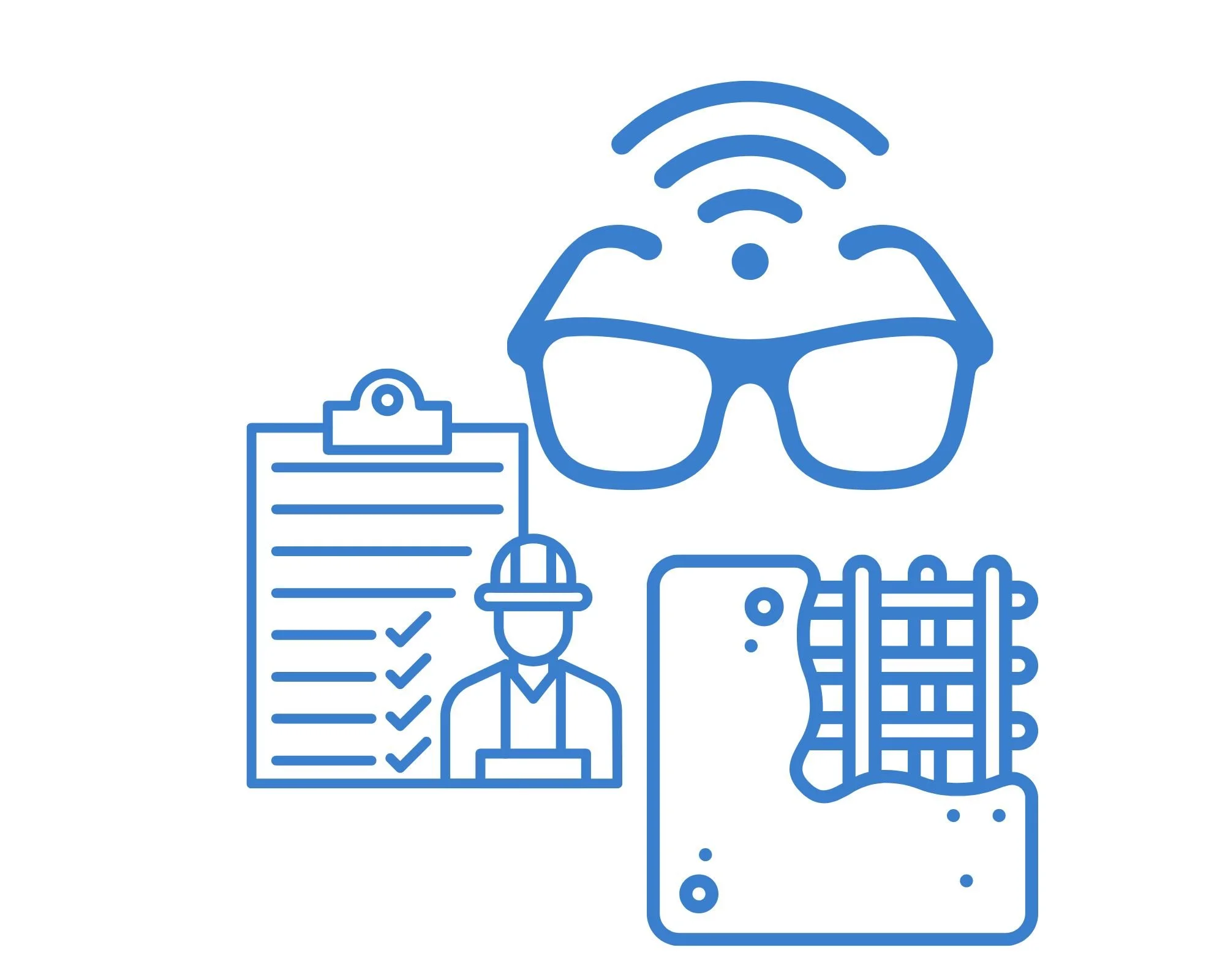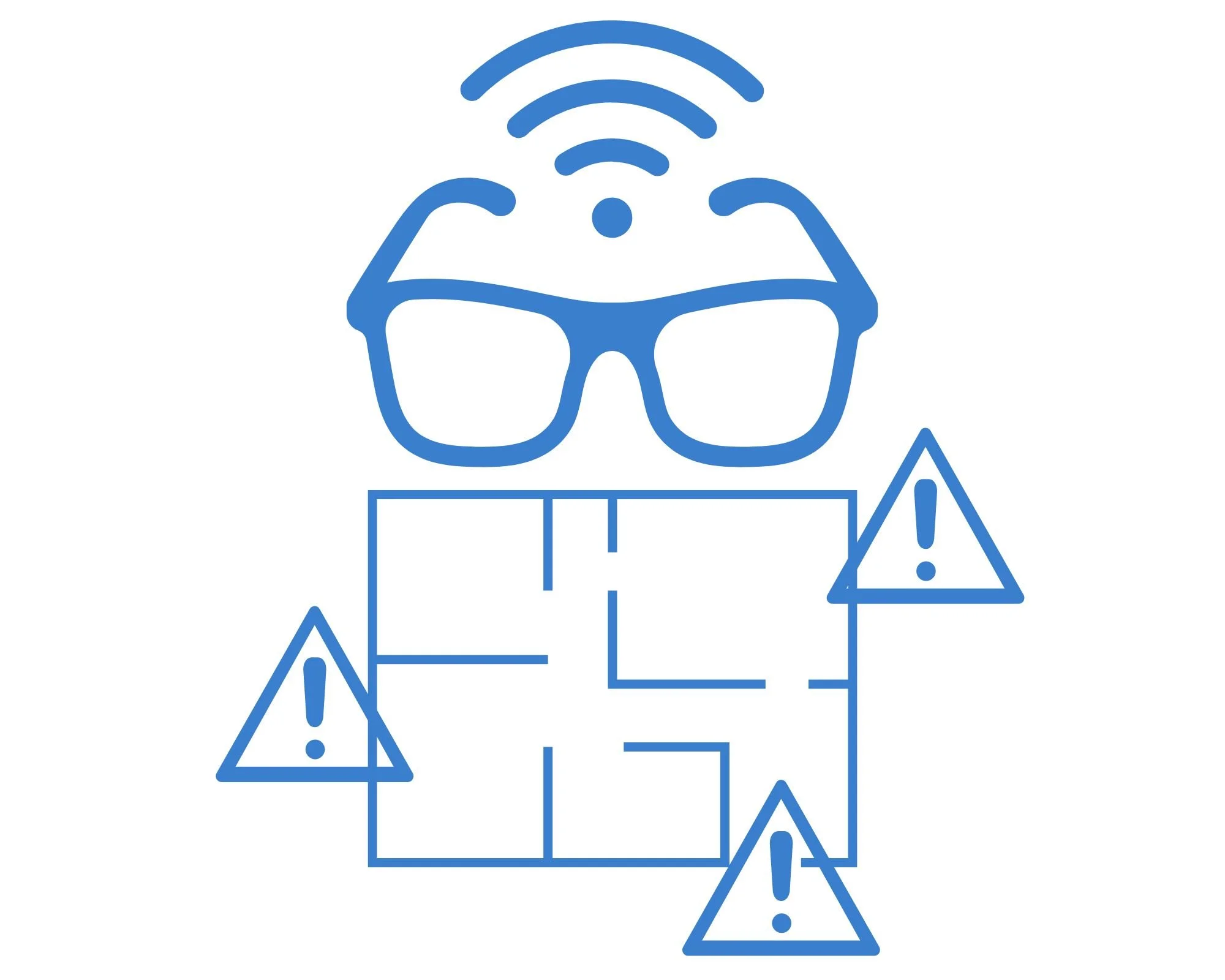Quality Assurance with Smart Glasses
Real world uses for Smart Glasses in construction.
Real-time hands-free collaboration and communication.
Trainees can access step-by-step instructions and 3D models.
Hands-free access to project documents and blueprints.
Remote expert assistance.
Streamline quality control by capturing images, videos with real-time evaluation and issue resolution.
Integrate with BIM platforms, access 3D models and project data.
Overlay digital 3D models onto the physical environment to detect potential issues.
Track project progress with to-do lists and alerts.
Identify potential hazards such as gas leaks or structural issues.
Navigate construction sites and track the location of colleagues, equipment and materials.
Construction QA use cases
- General
- Civil
- Residential
- Commercial
- Industrial
General Construction
Real-Time Visual QA Checklists
Use case: Workers follow visual QA checklists through AR overlays while inspecting finished framing or structure.
Reduces human error by ensuring every step is followed.
Saves time by keeping hands free and checklists in direct view.
Provides photo/video evidence for documentation and audit.
Live Remote Inspection
Use case: Site workers stream live video to offsite QA inspectors for real-time approvals.
Minimises rework delays by getting instant feedback.
Reduces travel costs and inspection scheduling conflicts.
Increases documentation accuracy with recorded sessions.
As-Built Comparison Overlays
Use case: Smart Glasses overlay BIM models to confirm that the actual build matches design specs.
Identifies deviations immediately before next phase begins.
Ensures compliance with structural tolerances.
Enhances communication across trades on-site.
Civil Construction
Concrete Pour Monitoring
Use case: QA personnel use AR to overlay pour maps and check slab thickness or reinforcement placement live.
Ensures consistency in depth and layout.
Reduces risks of cracking or structural failure.
Captures pour date/time/location visually for recordkeeping.
Underground Services Verification
Use case: Workers validate pipe/cable placement before backfill using AR overlays of utility maps.
Prevents future excavation errors and rework.
Confirms placement accuracy per engineering drawings.
Improves audit trail with geotagged visual confirmation.
Road Grade and Slope Confirmation
Use case: AR Glasses display grade and elevation data aligned to design specifications while checking road base.
Allows precise grading QA in real-time.
Cuts down on surveying time and rework.
Improves drainage and long-term surface quality.
Residential Construction
Finish Quality Inspection
Use case: QA staff visually check paint, plaster, cabinetry, and tiling with checklist overlays.
Standardises QA checks across multiple homes.
Ensures client-ready finishes before walkthroughs.
Flags defects early while teams are still on-site.
Smart Tagging Tools
Use case: Workers tag defects via voice or gesture in their field of view during walkthroughs.
Speeds up defect capture and reporting.
Syncs directly to ‘punch’ or ‘snag’ list systems.
Improves collaboration between QA and trades.
HVAC and Plumbing Verification
Use case: AR overlays show hidden pipe and duct locations before wall closure.
Prevents damage to hidden systems.
Ensures all routing matches design and code.
Reduces need for rework post-closure.
Commercial Construction
Code Compliance Audits
Use case: QA teams use Smart Glasses to walk through and visually verify fire safety, egress and DDA compliance.
Streamlines regulatory checks.
Reduces oversight by presenting required specifications live.
Creates time-stamped compliance documentation.
Facade and Cladding QA
Use case: Inspectors confirm alignment, fastening and materials of exterior panels via AR overlays.
Prevents facade misalignment and material waste.
Tracks QA history for each section visually.
Boosts safety by confirming integrity pre-installation.
Multi-Trade Coordination Checks
Use case: QA teams validate clearances between mechanical, electrical and plumbing systems.
Prevents costly trade clashes before fit-off.
Increases accountability across subcontractors.
Improves overall site productivity and scheduling.
Industrial Construction
Structural Steel QA
Use case: Inspectors verify bolt torque, weld quality, and alignment using checklists overlaid in real time.
Reduces structural risks by ensuring every joint is checked.
Supports traceability through image logs.
Ensures compliance with engineering specs.
Equipment Installation Accuracy
Use case: Smart Glasses display precise placement guides for large machinery.
Minimises misalignment during install.
Saves time on layout and rework.
Supports lean construction practices.
Hazard Identification During QA Walks
Use case: AR overlays flag risk zones or missing safety measures during QA inspections.
Enhances site safety during QA tasks.
Ensures that WHS requirements are visible and enforced.
Reduces downtime from compliance violations.




